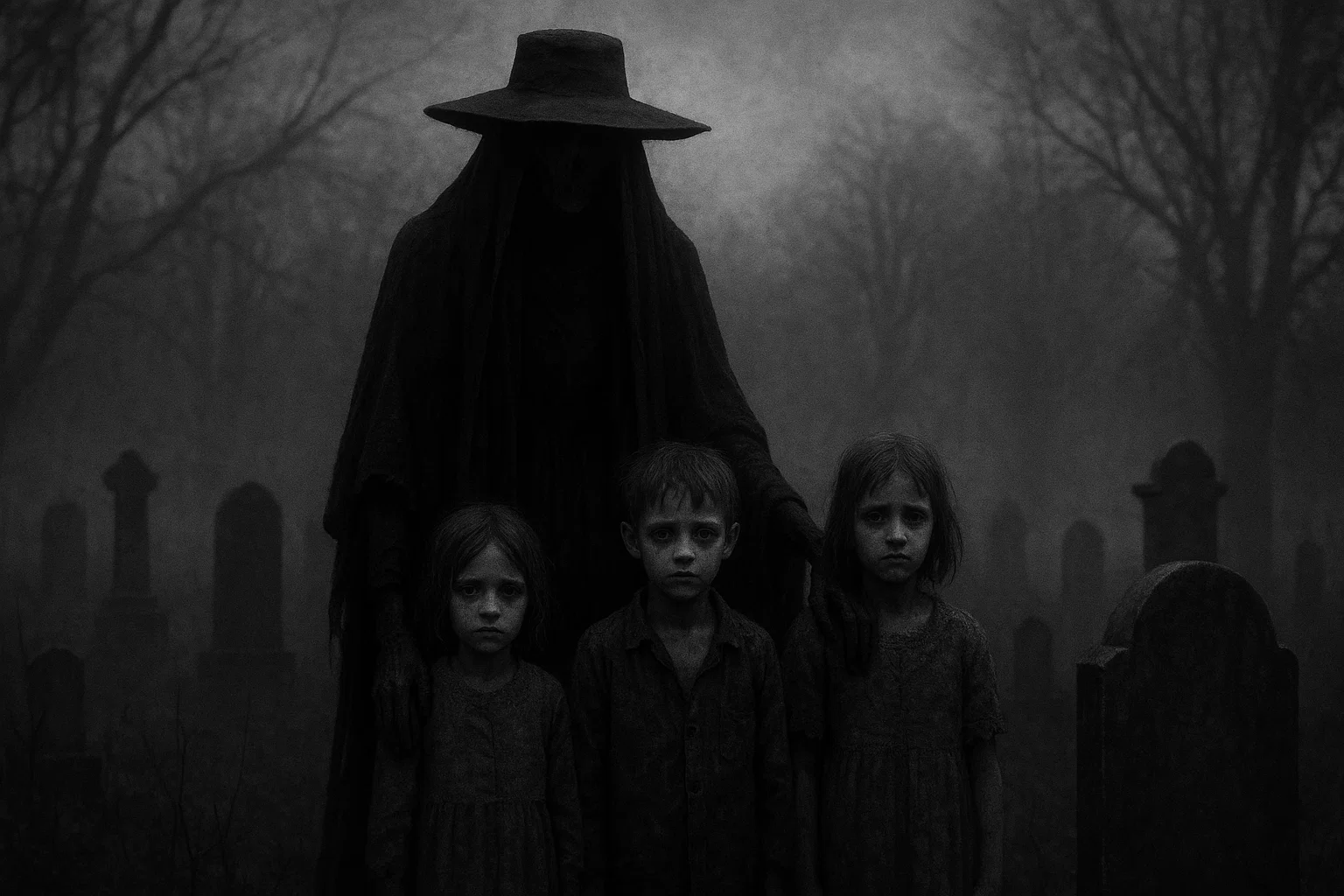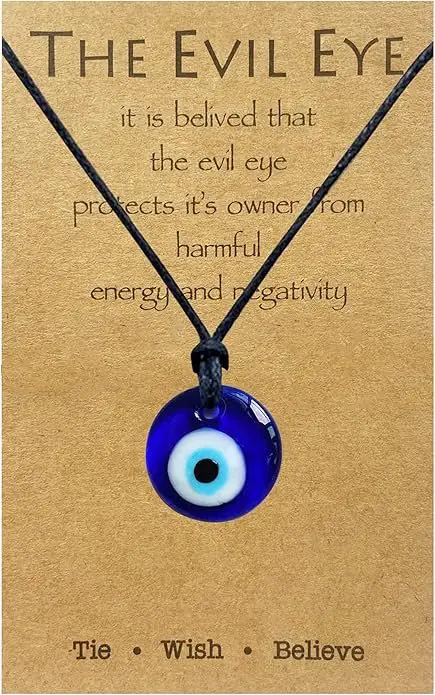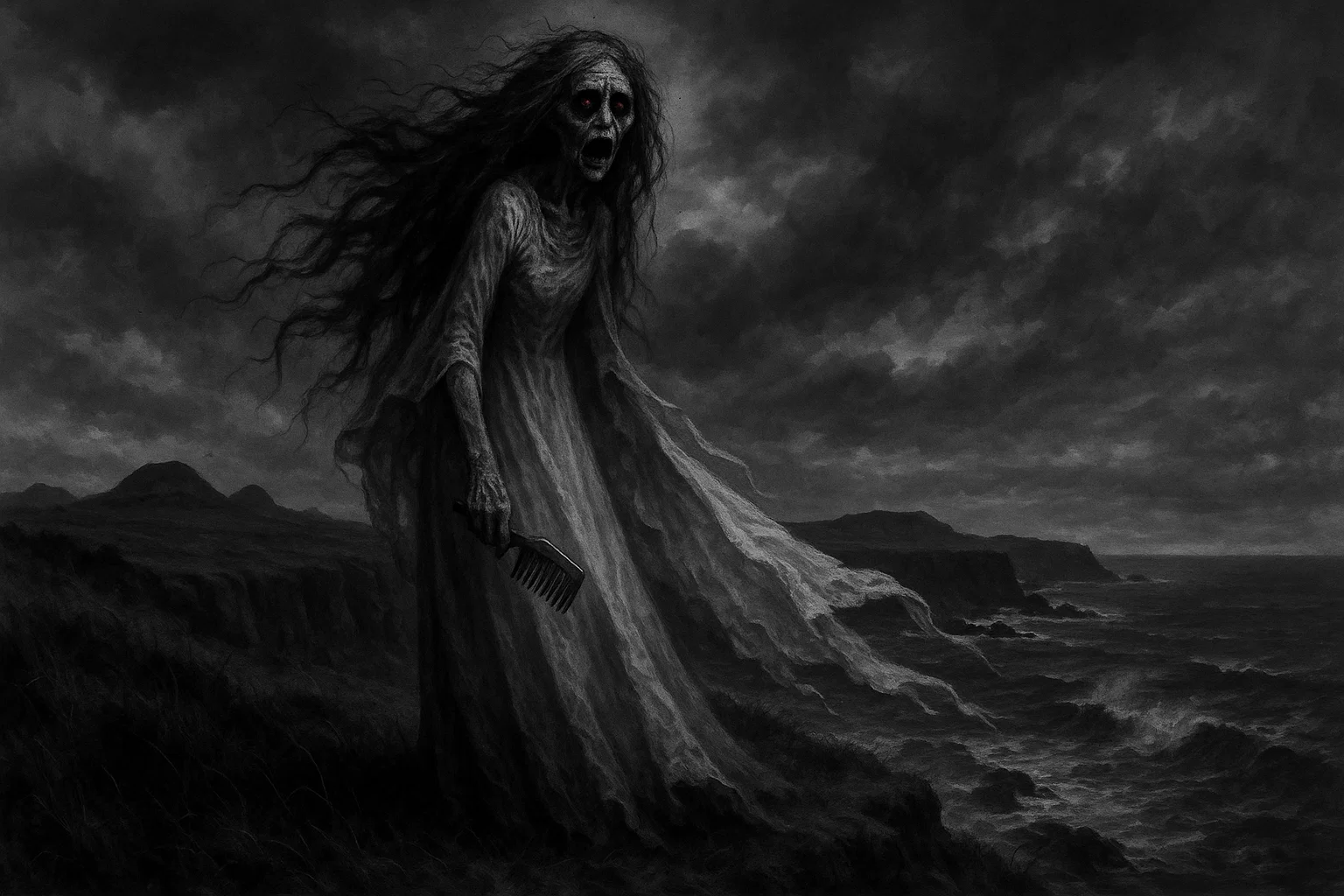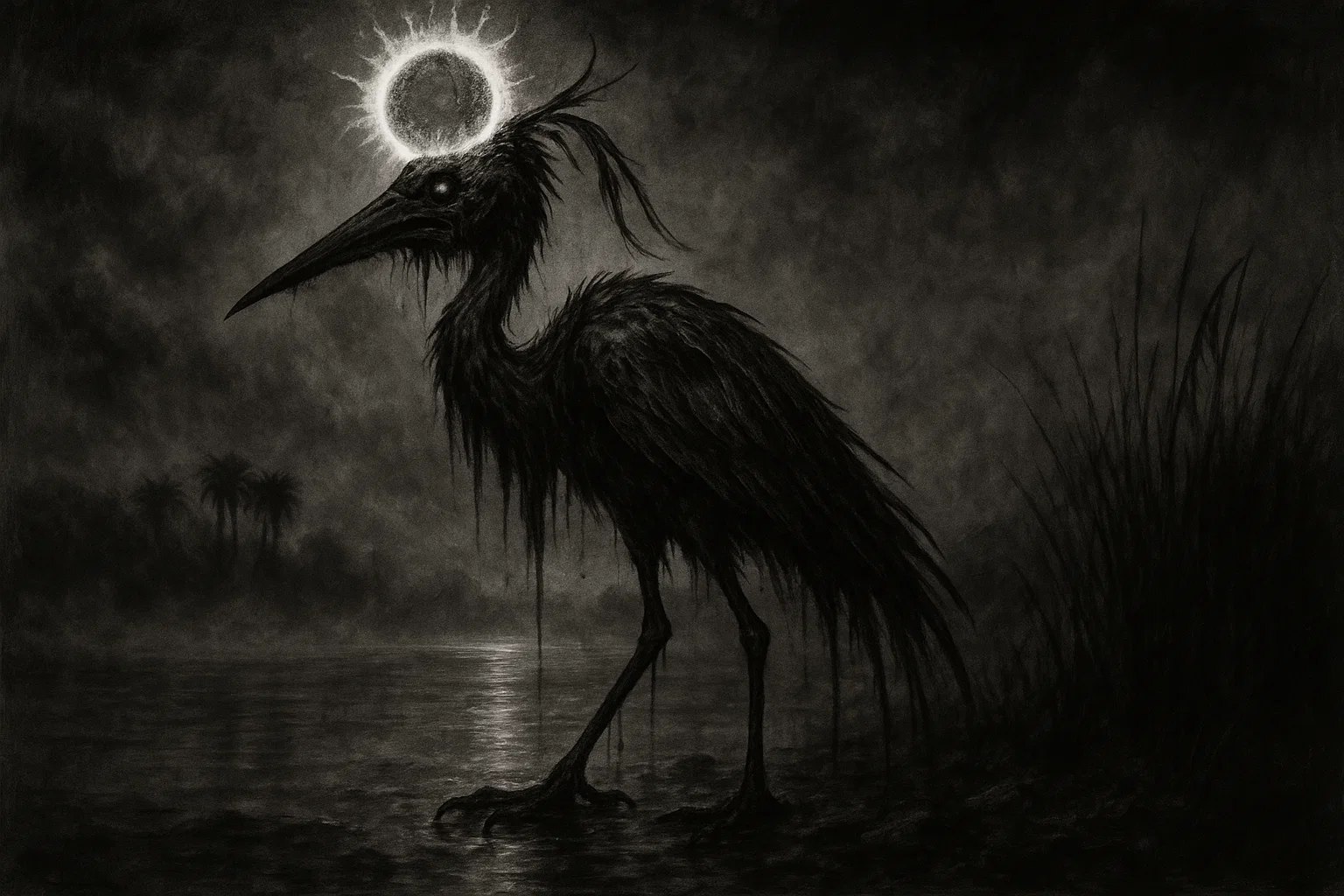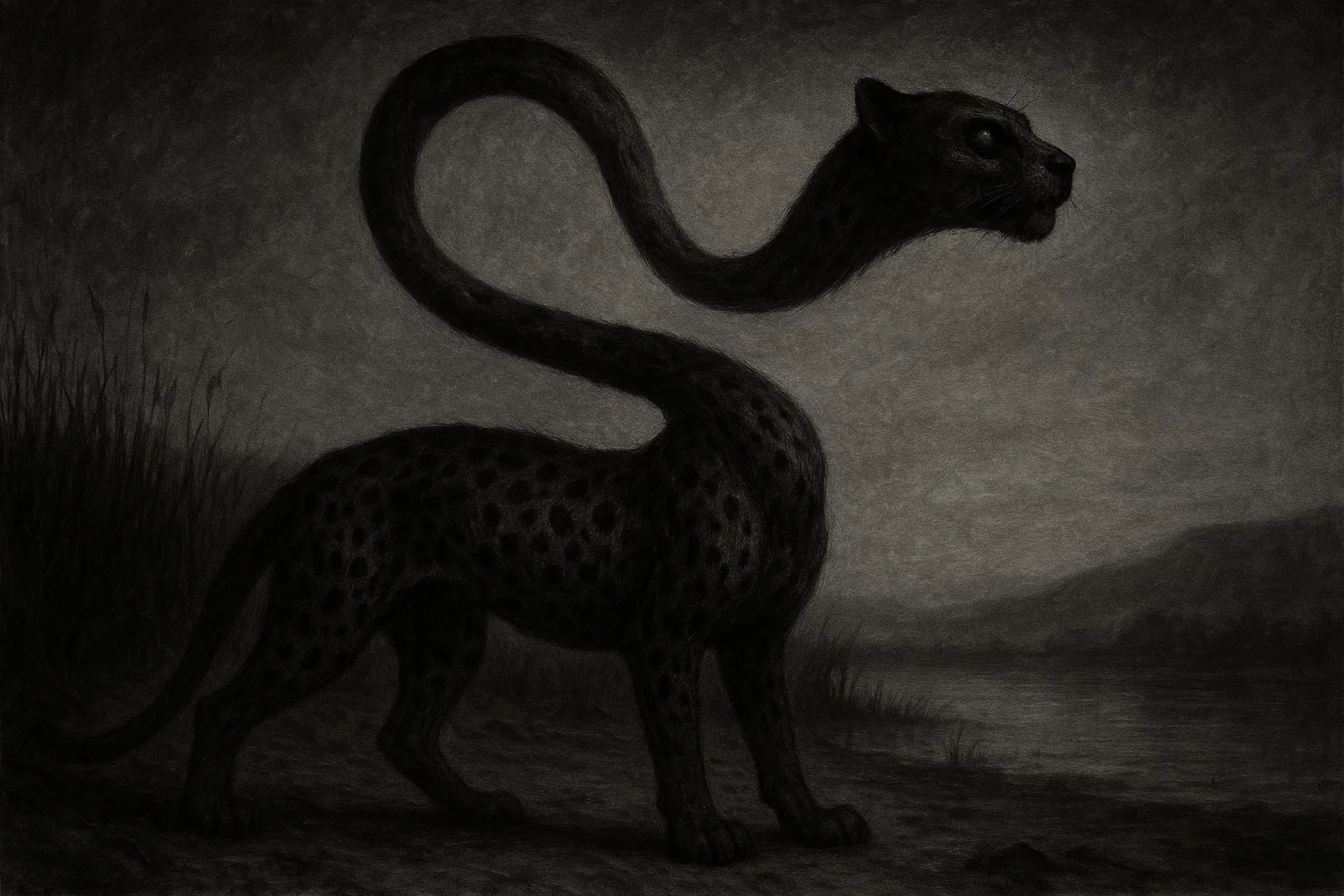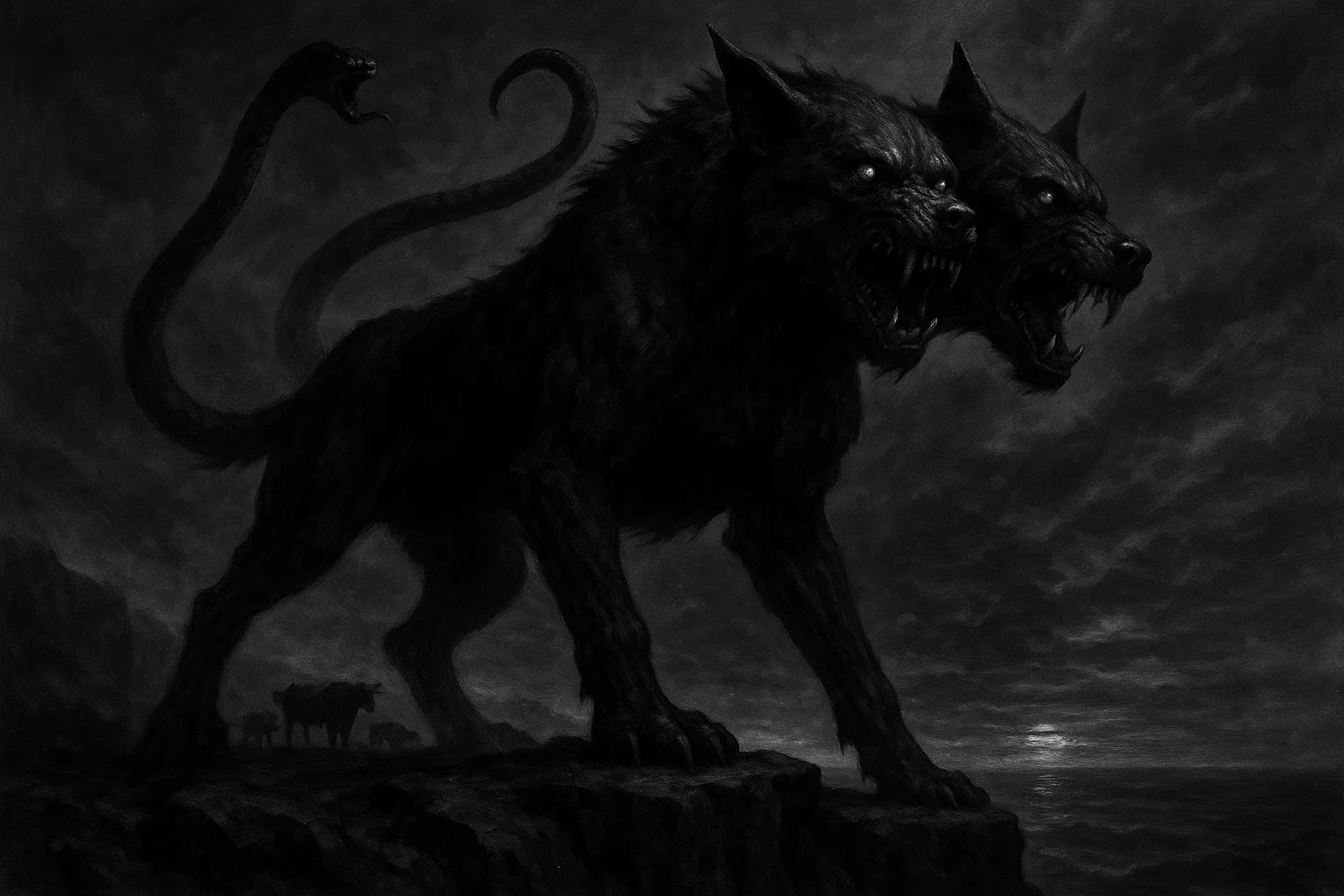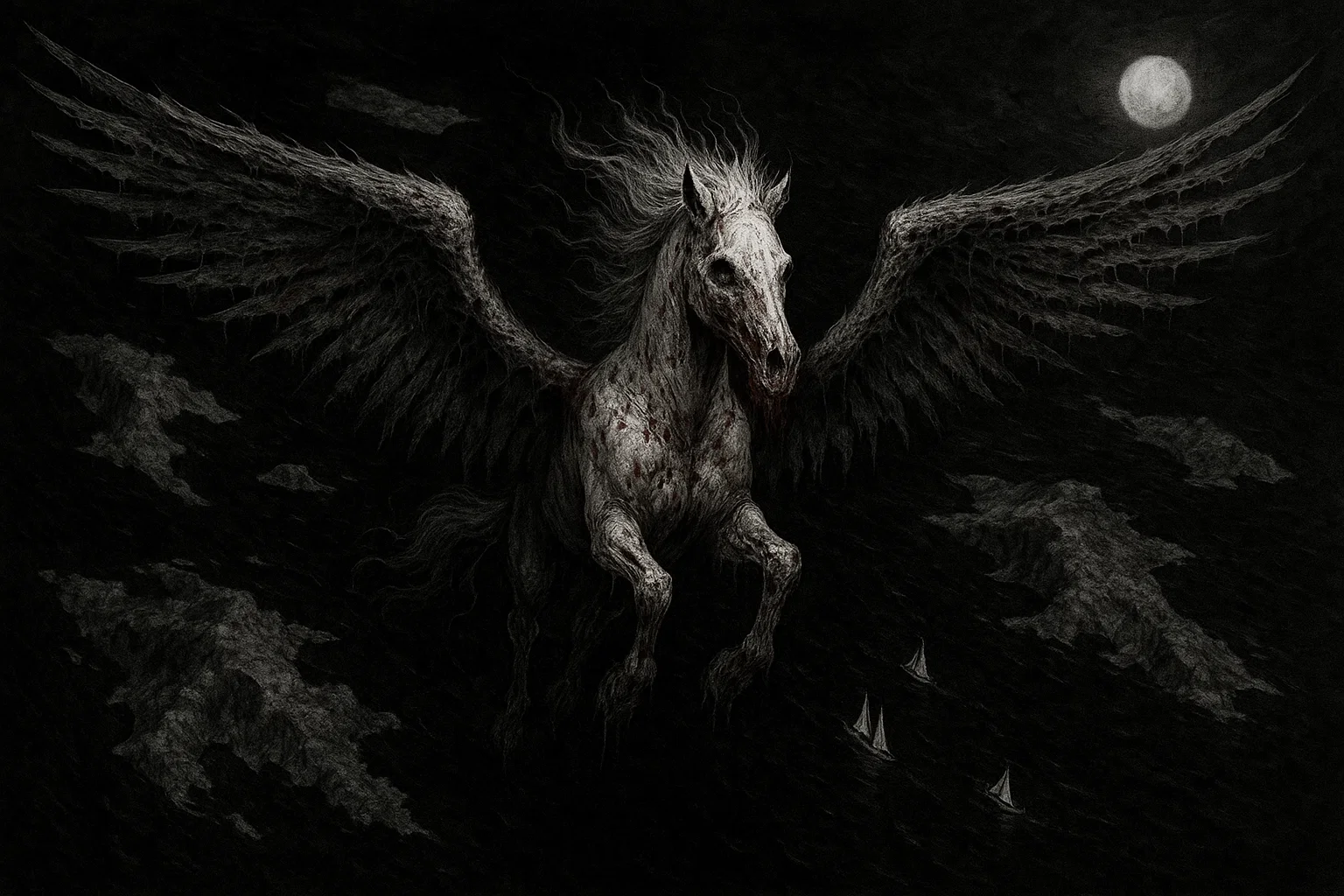Huggin’ Molly is a prominent figure in Southern American folklore, specifically associated with the small town of Abbeville, Alabama. The entity is a specter or mysterious wraith, frequently described as a giant woman who stalks the streets after dark, primarily targeting children and teenagers who are out past sundown.
The core of her legend is defined by the unique, terrifying nature of her encounter: she chases down her victims, gives them a huge, tight hug, and screams loudly into their ear before vanishing.
While she is not known to inflict physical harm beyond the profound fright, her primary function is that of a cautionary figure, used by parents for generations to ensure their children adhere to a strict curfew and remain safely indoors at night.
Summary
Key Takeaways
| Attribute | Details |
| Names | Huggin’ Molly; The Woman in Black; The Lady in Black |
| Nature | Supernatural entity, most commonly believed to be a ghost or vengeful spirit |
| Species | Spectral, Humanoid |
| Appearance | A very tall, large, feminine figure, perhaps 7 feet tall, dressed entirely in black, often with a wide-brimmed hat |
| Area | Abbeville, Alabama, USA, specifically the town streets and dark corners |
| Creation | Varies: A grieving mother driven mad by the loss of her child; the vengeful ghost of a murdered woman; a witch; a teacher |
| Weaknesses | No documented weaknesses or methods for outright destruction; she can be repelled by getting to the safety of a bolted door |
| First Known | Early 1900s, with documented sightings and reports from the 1920s |
| Myth Origin | Southern American folklore and a local legend specific to Abbeville, Alabama |
| Time Active | Nocturnal, especially on the darkest, quietest nights |
| Protection | Staying indoors after dark; hurrying to a safe, secured dwelling |
| Diet | None documented; the creature’s purpose is to scare, not to consume |
Who or What Is Huggin’ Molly?
Huggin’ Molly is a deeply ingrained local legend and supernatural entity hailing from Abbeville, Alabama.4 She is not a widely known figure in global monster or mythologies. Still, she holds a powerful presence in the regional folklore of the American Deep South. The legend’s purpose is primarily pedagogical, serving as a powerful, highly effective cautionary tale for children.
As a monstrous entity, Huggin’ Molly’s behavior is anomalous. Unlike traditional ghosts or specters that inflict physical harm, drain life, or consume souls, her entire documented interaction with a victim is comprised of a rapid pursuit, a crushing embrace, and a deafening scream.
This unique sequence has been enough to instill profound terror in generations of local youth, ensuring that the warning—to be inside when darkness falls—is taken seriously. She embodies the terror of the unseen dangers that lurk in the night. However, the threat she poses is psychological and emotional rather than corporeal.
Why Do So Many Successful People Secretly Wear a Little Blue Eye?
Limited time offer: 28% OFF. For thousands of years, the Turkish Evil Eye has quietly guarded wearers from the unseen effects of jealousy and malice. This authentic blue glass amulet on a soft leather cord is the real thing – beautiful, powerful, and ready for you.
Genealogy
Research does not indicate that a formal, complex genealogy exists for Huggin’ Molly. Her nature is typically described as a solitary specter or a Woman in Black figure, with her origin story shifting among various possibilities such as a grieving mother, a murdered woman, or a strict teacher.
No folklore describes parents, siblings, or other related figures in her family line, which is consistent with her identity as a localized, cautionary ghost story.
| Attribute | Details |
| Parents | Not documented |
| Siblings | Not documented |
| Spouse/Partner | Not documented |
| Offspring | Theories suggest she lost her own child, but no supernatural offspring are mentioned |
| Related Entities | Often associated conceptually with figures like La Llorona or the Banshee, due to her grief, nocturnal wailing, and warning function, but no direct mythological connection exists |
You may also enjoy:
Bennu: The Dark Bird of Fire, Death, and Eternal Return
December 8, 2025
Complete Guide to Oregon Bigfoot Sightings (1904–2025)
August 6, 2025
Etymology
The name Huggin’ Molly is a descriptive appellation derived directly from the creature’s characteristic and terrifying actions. The term Huggin’ refers to the violent and inescapable embrace she imposes on her victims. This action is central to her identity, as it is the primary physical interaction she engages in.
The second component, Molly, is a common given name, likely chosen to provide a degree of familiarity and local resonance to the terrifying figure.
The name is not tied to any complex etymological roots in ancient languages or mythological systems; rather, it is a straightforward folk name assigned by the people of Abbeville, Alabama, to the unknown entity that haunts their streets.
The name is directly related to the folklore’s function: to name the monster after what it does to scare you. The use of a relatively innocuous action—a hug—followed by the extreme terror of a deafening scream creates a powerful contrast, making the legend uniquely unsettling.
Alternative names, such as the Woman in Black or the Lady in Black, are more generic and refer to her appearance. Still, the original name, Huggin’ Molly, remains the primary designation due to its vivid description of the core encounter.
The legend took hold in the early 1900s, suggesting that the name crystallized during this period as the story spread among local families. The simplicity of the name has contributed to the legend’s durability and effectiveness as a behavioral deterrent.
What Does Huggin’ Molly Look Like?
Descriptions of Huggin’ Molly consistently focus on her imposing size and her attire. She is typically depicted as an exceedingly tall figure, often portrayed as standing around 7 feet tall. Her build is also described as substantial, sometimes as big around as a bale of cotton.
Huggin’ Molly is perpetually dressed entirely in black. This dark clothing generally consists of a long black dress or a shroud and is often complemented by a wide-brimmed black hat.
The hat, in most accounts, serves to obscure her face, keeping her features in perpetual shadow and adding to her phantom-like quality. When she walks or sweeps the streets, the sound of her long black skirt rustling is sometimes noted as a subtle, unsettling detail that precedes her presence. She moves quickly, able to chase down those she pursues, despite her size.
Overall, she presents as a towering, featureless, black silhouette moving through the night.
Why Do Some Prayers Work Instantly While Others Bounce Off?
Limited-Time: Up to 40% OFF!
Deliverance explodes when you stop praying generally and start commanding specifically. This book hands you the master list of demonic names and functions used by apostles and exorcists worldwide – Jezebel, Python, Death, Antichrist spirits – plus the scriptural authority to make them obey.
Mythology
The mythology of Huggin’ Molly is fundamentally an American Southern ghost story tied to a specific geographical location: Abbeville, Alabama. Unlike the myths of creatures whose origins trace back to deep antiquity, the legend of Huggin’ Molly appears to have solidified around the early 1900s.
Early accounts and reported sightings date back to the 1920s, suggesting the folklore was actively spreading and evolving during this period.
The story serves as a classic bogeyman narrative in local culture, primarily to enforce a nighttime curfew for children. This practical, social function is a defining characteristic of her mythology.
The entity’s origins are not singular and are typically presented as a set of competing narratives, each offering a reason for the Woman in Black to roam the streets with such a peculiar, terrifying objective.
One of the most popular origin stories suggests that Huggin’ Molly was a grief-stricken woman who had tragically lost her own child. Driven mad by sorrow, she began to wander the streets in the dark, seeking other children to embrace in a desperate, twisted attempt to cope with her loss.
This interpretation casts the hug as a desperate, overwhelming expression of misplaced maternal anguish, which manifests as terror for the recipient.
Another version of the mythology posits that she is the vengeful ghost of a murdered woman. In this account, she is not seeking solace but rather justice, or perhaps protecting others from her own fate, by ensuring young people are not vulnerable on the streets late at night.
A third, less supernatural, but locally persistent, theory suggests she was a teacher at the former Alabama Agriculture School who would dress in black to scare her students off the streets and keep them safe from genuine nightly dangers.
Regardless of the specific origin, the shared constant in the Huggin’ Molly mythology is the terrifying sequence of pursuit, hug, and scream, and the knowledge that she has been a very real part of the local consciousness for over a century, as documented sightings continued into the 21st century.
You may also enjoy:
Ittan-momen: The Flying Cloth Yokai That Strangles Victims
September 10, 2025
Who Is Vual in Demonology? Powers, Lore, and Origins
August 12, 2025
Who Is Zagan, Hell’s Great Transformer?
May 28, 2025
Hell’s Gate Bridge Haunting: From Tragic Deaths to Demonic Portals
September 23, 2025
The Mare: The Nightmare Monster That Crushes Men in Their Sleep
October 27, 2025
Legends
Mack Gregory’s Encounter (1920s)
One of the most frequently cited early accounts of an encounter with Huggin’ Molly involves a local Abbeville resident named Mack Gregory.
In the 1920s, Gregory was a teenager who worked a late-night job delivering groceries for a local store. As it grew late, and the darkness deepened, Gregory was on his way home from his final delivery.
While walking, he began to feel a presence behind him, a sense that he was being followed. He turned around to look and saw a tall, dark figure trailing him from the shadows.
The figure was clearly feminine and was dressed completely in black. Gregory became nervous and increased his pace to a fast walk, but the figure also quickened its pace to match.
When he slowed down, the figure coyly slowed its pace as well. Realizing that he would likely be unable to simply outrun the mysterious entity, Gregory hurried to a jog until he was close to his own front door. He then broke into a full sprint to reach the safety of his house, slamming the door shut behind him before the figure could reach him.
The experience served as a powerful testament to the legend’s reality, confirming for many local residents that the entity was real and patrolled the streets after dark.
The Mother’s Warning
A report similar to Mack Gregory’s came from the mother of another local teenager who was out late one night. The mother felt a powerful instinctual compulsion to rush out onto her front porch.
In the dim light of the night, she saw her son hurrying down the sidewalk toward the house. Close behind him, moving quickly, was a second, darker figure—the undeniable presence of Huggin’ Molly.
The mother witnessed the entity, with long, outstretched arms, rapidly closing the distance to her son. In a moment of panic and clarity, she screamed at her son to run. The boy sprinted the remaining distance.
The mother held the door wide open until her son safely rushed inside. She then immediately shut and bolted the door before the mysterious, dark figure could follow them in.
In this account, as in Gregory’s, the boy was never touched or harmed, but the fright was immense, and the entity was successful in its ultimate goal: ensuring the child was safely secured indoors.
Huggin’ Molly vs Other Monsters
| Monster Name | Origin | Key Traits | Weaknesses |
| La Llorona | Mexican/Latin American folklore | Ghostly woman wailing for her drowned children; primarily haunts waterways | Rituals, holy objects, or being confined to her specific haunted location |
| Banshee | Irish/Gaelic mythology | Female spirit whose wail foretells a death in the family; typically non-physical | No known weakness; her appearance is an inevitable omen |
| The Woman in Black | Global/European folklore | A ghost dressed entirely in black, often tied to a tragic past or maternal grief | Often tied to a specific object or place that can be put to rest |
| The Bogeyman | Global folklore | Generic monster used to frighten children into good behavior; no fixed appearance | Often dispelled by light, logic, or simply being ignored by a brave child |
| Strzyga | Slavic mythology | Undead, two-hearted female creature who feeds on blood; similar to a vampire | Silver weapons, beheading, specific funeral rites like a coin in the mouth |
| Bloody Bones | English folklore | A goblin-like creature that lives in cupboards or dark places to scare children | Light, opening the door/cupboard, or the child’s courage |
| Yamauba | Japanese folklore | Mountain hag or witch who feeds on travelers; shape-shifter | Being outsmarted; reliance on specific folklore items like charms |
| Black Annis | English folklore | Blue-faced hag with iron claws who preys on children and sheep | Iron/cold iron; exposure to sunlight |
Huggin’ Molly shares key characteristics with several global monstrous entities, particularly those used as pedagogical figures in folklore. She is most similar to the Banshee and La Llorona in her possible origin as a grief-stricken female spirit (a mother or a woman wronged) and her use of a terrifying vocalization (a scream or wail).
Like the Bogeyman and Bloody Bones, her main function is to enforce social obedience, specifically a nighttime curfew. Her appearance as a Woman in Black aligns her with a widespread archetype in European ghost lore, which often signifies a woman tied to a tragedy or maternal loss.
However, Huggin’ Molly is distinguished by her unique physical action: the inescapable, terrifying hug. Traditional “Woman in Black” figures or weeping women typically do not engage in a violent embrace.
Furthermore, her lack of any documented physical harm to victims—she only frightens them—separates her from predatory figures like the Strzyga or Yamauba, who consume or physically injure their prey.
The absence of a known, specific supernatural weakness also makes her different from many classical entities who are defeated by silver or holy water. Instead, her only repellent is the simple, practical action of retreating into a secure home.
Ever Walk Into a Room and Instantly Feel Something Watching You?
Millions have used burning sage to force out unwanted energies and ghosts. This concentrated White Sage & Palo Santo spray does the same job in seconds – just a few spritzes instantly lifts stagnation, breaks attachments, and restores peace most people feel immediately.
Powers and Abilities
Huggin’ Molly’s powers and abilities are centered entirely on intimidation and pursuit. She is a being designed to scare, and her supernatural traits are tailored to that singular objective.
Her primary ability is her superhuman speed and persistence, allowing her to quickly pursue and catch anyone out on the streets at night, regardless of their size or speed. Furthermore, her large, shadowy appearance contributes to a sense of unnatural size and dread, which is heightened by her ability to seemingly appear from the shadows of the street corners.
Her most potent documented ability is the terrifying sonic attack delivered at the climax of the encounter. This shriek or scream, delivered directly into the victim’s ear while tightly embracing them, causes a severe psychological shock, which is the creature’s true “attack.”
As a spectral entity, she also possesses a degree of invulnerability to ordinary physical attack and the ability to move with supernatural speed to close the distance on her victim.
- Supernatural Pursuit: The ability to move faster than an ordinary human, allowing her to quickly close the gap and catch anyone she targets on the streets after dark.
- Aural Terror: The capacity to deliver a deafening, terrifying scream directly into the victim’s ear while embracing them, inflicting extreme psychological trauma.
- Shadowy Manifestation: The ability to appear from and disappear into the darkness and shadows of the night, making her sudden appearance a shock.
- Intangibility/Invulnerability (Implied): As a ghost or specter, she is impervious to ordinary physical harm, allowing her to continue her nocturnal patrols unhindered.
You may also enjoy:
What Is the Holawaka? The Ethiopian Spirit Bird That Doomed Humanity
November 10, 2025
Who Is the Noppera-bō? The Eerie Legend of Japan’s Faceless Ghost
September 10, 2025
Ohio State Reformatory Haunting: A Legacy of Death and Despair
October 24, 2025
Can You Escape Huggin’ Molly?
The legends surrounding Huggin’ Molly do not provide any specific rituals, charms, or mythological weaknesses (such as silver, holy water, or specific burial rites) that can be used to permanently destroy or defeat her. Since she is primarily a figure of caution whose only known action is to induce terror rather than to kill or feed, the narrative focuses on avoidance rather than confrontation.
The most effective method to ward off or escape Huggin’ Molly is to strictly adhere to the curfew the legend enforces: do not be out after dark.
If an encounter is already in progress, the lore confirms that the only reliable method of escape is rapid and decisive retreat. A person can escape her pursuit by sprinting to the safety of a home and quickly slamming and bolting the door.
The entity is not documented as having the ability to pursue a victim within a secure, closed building. Thus, the way to “defeat” Huggin’ Molly is to outrun her to safety, thereby denying her the chance to execute her terrifying embrace and scream. She is an entity whose power is limited to the darkness of the streets.
Conclusion
Huggin’ Molly remains a compelling and highly localized figure in the folklore of Abbeville, Alabama. Her legend is a classic example of a cautionary bogeyman used to regulate children’s behavior, ensuring they are safely home during the hours of darkness.
The uniqueness of her terror—a crushing, violent hug paired with a deafening shriek—distinguishes her from more conventionally predatory specters and monsters. She operates solely within the domain of fear, a phantom of the streets whose very existence serves a simple, practical, social function.
The ambiguity surrounding her origin, whether a grief-stricken mother, a murder victim, or even a disciplinarian teacher, highlights her multifaceted role.
This lack of a single, verifiable source allows the legend to adapt, maintaining its power by focusing attention entirely on the terrifying encounter itself.
Huggin’ Molly’s story is an enduring testament to the power of folklore to shape local culture and enforce community standards by creating a simple, unforgettable, and deeply unsettling supernatural entity.

